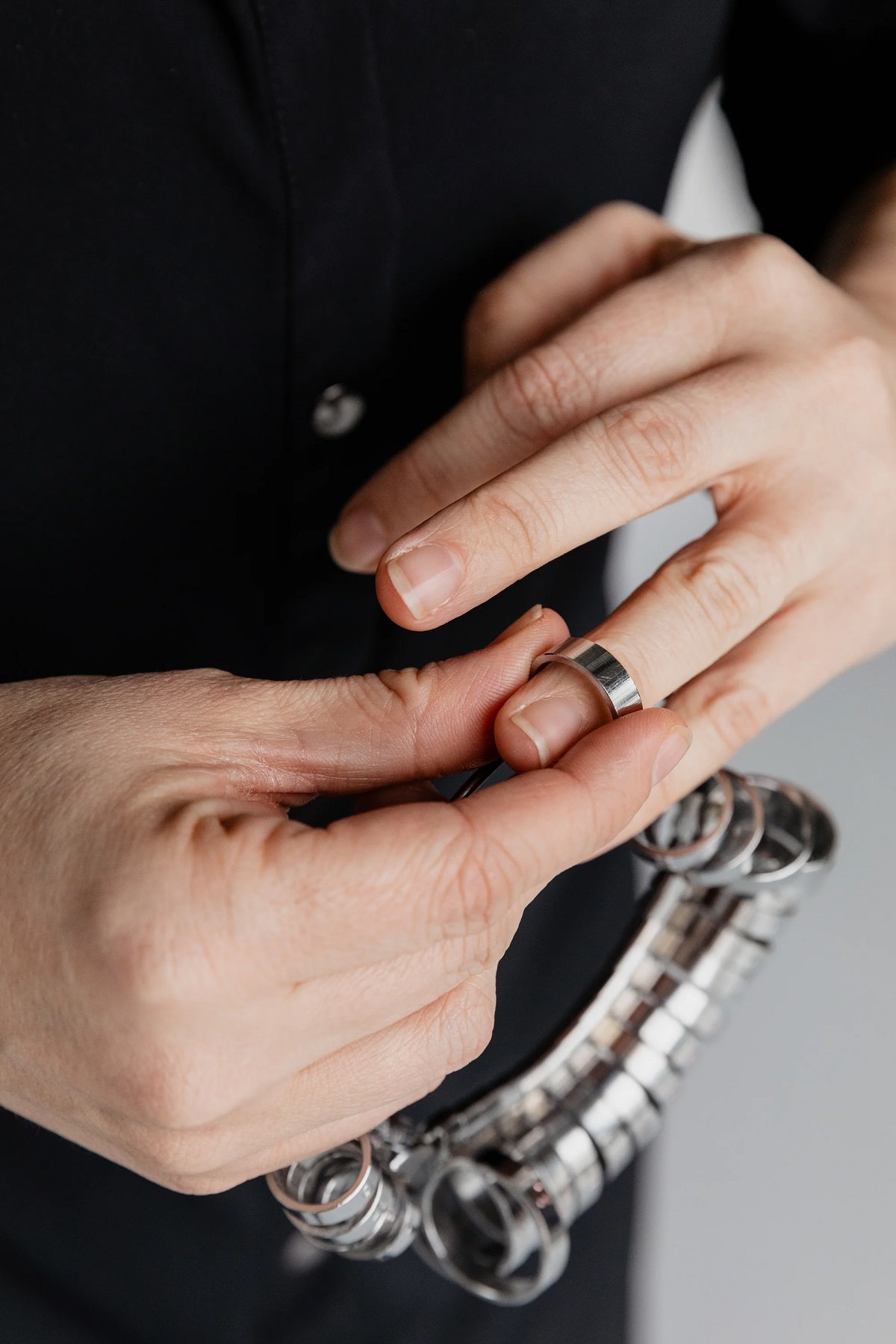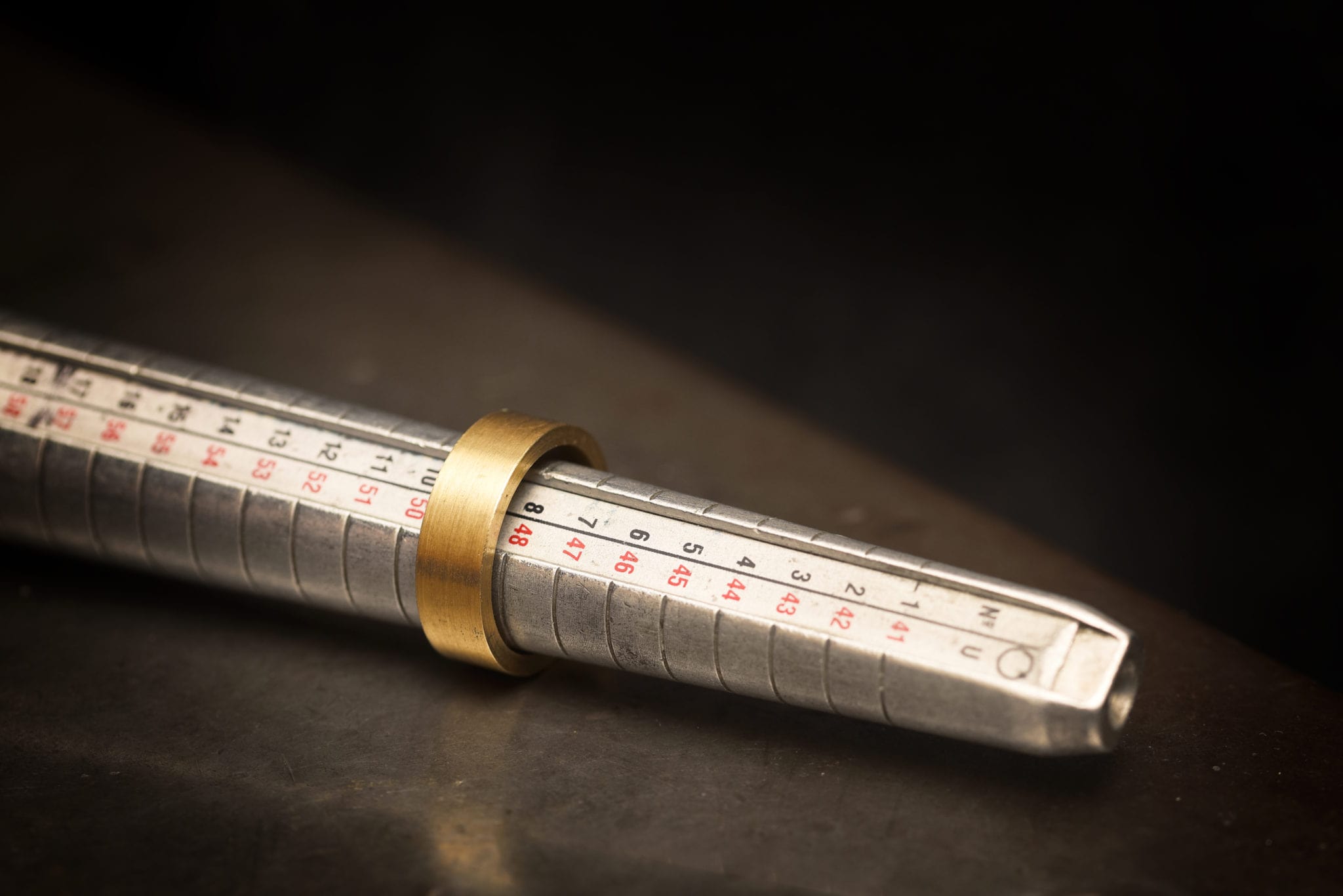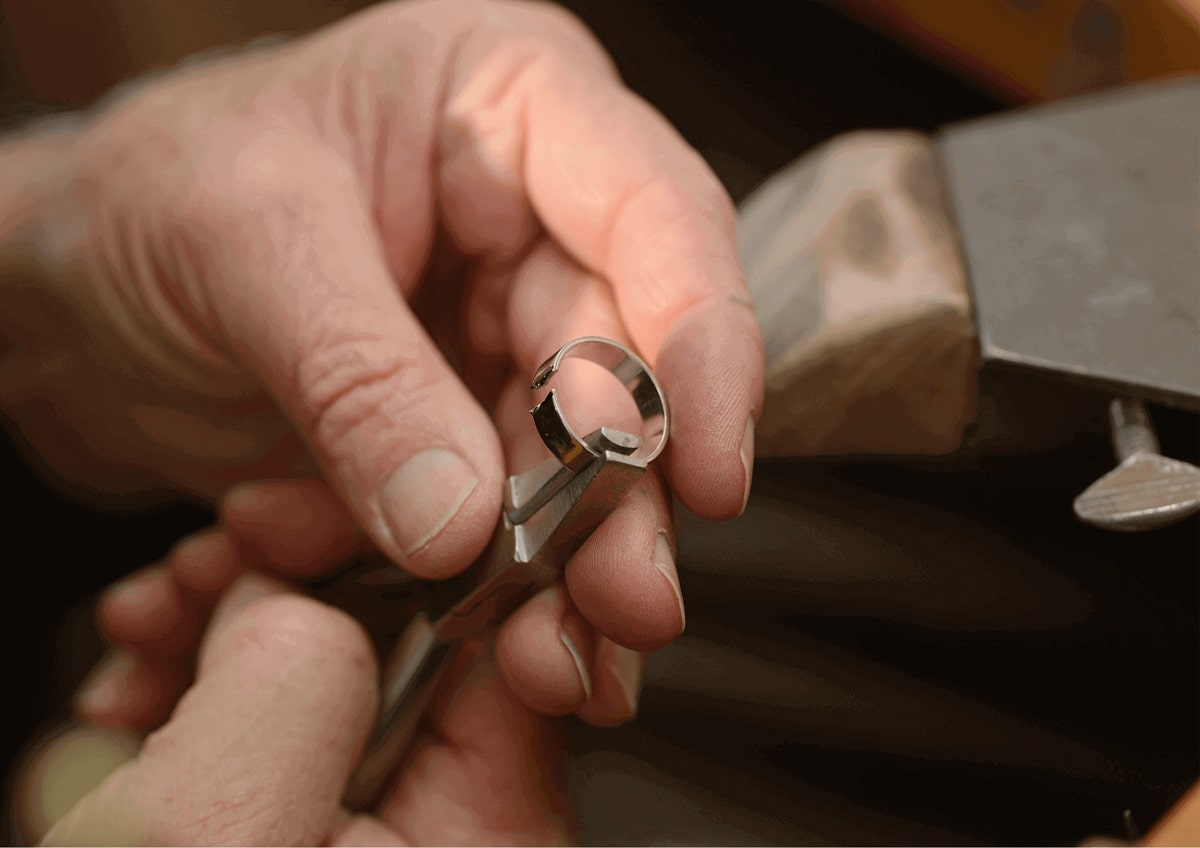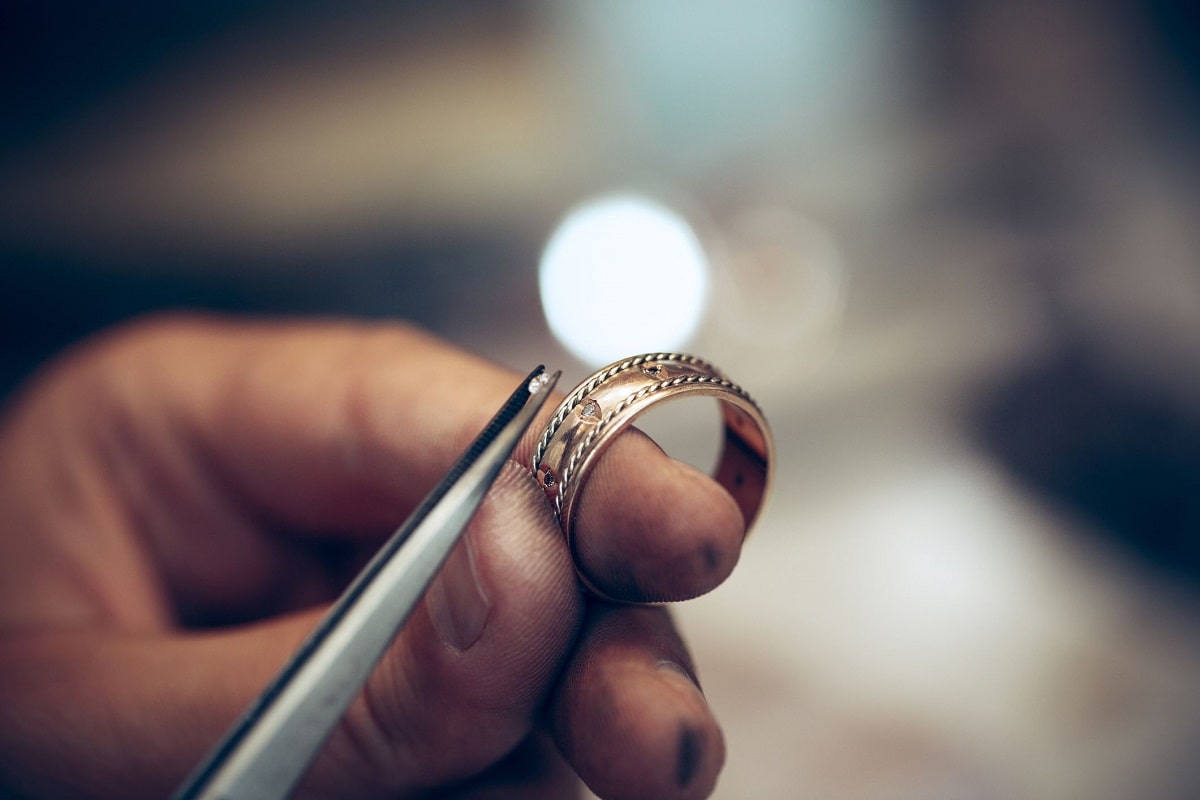1
HOME > Tips & Advice >
RESIZING AND REPAIRING WEDDING RINGS
Written by Menswear Style in Tips & Advice on the 31st July 2023

Many people have a sentimental attachment to wedding rings, which is quite understandable considering what it represents. However, at a point, wedding bands may need to be resized and repaired if they no longer fit properly or if they have been through their fair share of adventures. This article explores the subject of ring rejuvenation and the craft of maintaining the sentimental worth and timeless beauty of these material expressions of love.
Understanding Resizing
Getting the right fit is one of the factors to consider when buying wedding rings. Our fingertips, however, are not immune to change; they may enlarge or contract over time due to variables like weight changes, the ageing process, and with women, pregnancy. As a result, the ring that was once perfectly fitted could now be uncomfortable loose or tight. The process of changing a wedding ring's size to create a snug fit is known as resizing. But how does this procedure function? First and foremost, you should speak with a trustworthy jeweller who specializes in ring sizing. They have the expertise needed to evaluate your ring and direct you through the procedure. To establish whether resizing is feasible and the best way to accomplish the desired results, the jeweller will evaluate the ring's design, composition, and gemstone settings. Depending on the requirements, many processes are used to resize wedding rings:

Adding or Removing Metal
This technique is frequently applied to rings made of materials like gold, platinum, or silver. It involves adding or removing metal. A jeweller can carefully cut the band of the ring if it is too small and then add more metal to increase the circumference. On the other hand, if the ring is too loose, extra metal can be cut off to get the right size.
Stretching or Compression
Specialized tools can be used to stretch or compress rings made of certain materials, such as specific kinds of gold like a 6mm plated gold band. This method enables small size changes without affecting the ring's general structure or aesthetic.
Sizing Beads or Inserts
Sizing beads or inserts can be added to the interior of the ring for people who occasionally experience changes in finger size. These tiny metal beads or strips serve as spacers, ensuring a tight fit while facilitating simple removal if required. Although resizing usually provides a solution, it's essential to be aware that there are restrictions on how much a ring can be shrunk. Due to their structural integrity, rings with complex designs, large gemstone settings, or other materials may be subject to limitations. A knowledgeable jeweller will evaluate these elements and offer guidance on the best course of action.
Resizing Limitation
You should know that there are restrictions based on numerous aspects when it comes to resizing wedding rings. While many rings can be properly adjusted, in some cases it may be difficult or even impossible to do so without endangering the ring's integrity or design. Here are some typical scaling restrictions to take into account:

Material Constraints
Resizing is more easily accomplished with some metals than others due to differences in their characteristics. For instance, metals like platinum, silver, and gold (both yellow and white) are typically easier to resize. However, due to their hardness and makeup, alternative metals like tungsten or titanium are notoriously difficult to resize, if not impossible.
Design Complexity
Resizing may be difficult for intricate or ornamental designs with lots of engravings, details, or patterns. Changing the size can interfere with the exquisite details or jeopardize the ring's overall design.
Gemstone Settings
When resizing rings, special attention must be paid to rings with gemstone settings, such as prongs or pavé settings. Resizing can put stress on the settings, which might cause stones to become loose or fall out. The risk of harm while resizing increases with the complexity of the setup.
Significant Size Alterations
While minor ring size modifications are frequently possible, more significant alterations, like going up or down several full sizes, can be challenging. Extreme resizing may change the ring's original design, have an impact on how the gemstones are set, or weaken the band, all of which could cause structural problems.
Full-Circle Rings or Eternity Bands
It is difficult to resize eternity bands or rings with gemstones ringing the full circumference. The continuous row of jewels on these rings makes using conventional resizing methods impossible. Removing and resetting individual stones to change the size can be expensive and may have an impact on the ring's overall aesthetic. Speak with a qualified jeweller who can assess your particular ring and provide guidance on whether or not resizing is feasible.

Repairing Wedding Rings
Our daily activities sometimes leave marks on the wedding ring, resulting in wear and tear, and creating the need for wedding ring repair. It's important to seek the advice of a qualified jeweller when a wedding ring needs repair. The degree of the damage and the best repair strategies will be determined by a professional examination. The condition of the ring, including its metal type, gemstone settings, and general structure, will be assessed by the jeweller.
Prongs Retipping and Rebuilding
Prongs that have worn, twisted, or weakened over time can be repaired by re-tipping and rebuilding them. The gemstones may then become loose or may even fall out as a result of this. The prongs can be re-tipped or rebuilt by a jeweller to guarantee that they hold the jewels firmly. The prongs are strengthened and stabilized by bending or adding new metal during this procedure.
Cleaning and Polishing
Wedding bands that have been worn frequently may need cleaning and polishing to restore their shine. The appearance of the ring can be revitalized by using the jeweller's cleaning and polishing services. They will take off filth, tiny dings, and scratches, bringing back the ring's original brilliance and shine. The ring will appear brand new thanks to polishing, which can also assist to eliminate the appearance of deeper scratches.
Stone Replacement
A talented jeweller can expertly match and replace gemstones that have been lost, broken, or chipped. The jeweller will make sure that the new stone mixes in perfectly with the previous ones, whether it is a diamond or a colourful gemstone. During this painstaking procedure, a stone that is identical to the original in terms of size, shape, colour, and quality must be carefully chosen.

Band Repair and resizing
A jeweller can fix a band that has been harmed or made weaker by soldering, strengthening, or reshaping the metal. Resizing services are also offered for wedding bands that no longer comfortably fit due to changes in finger size. To ensure a snug and secure fit, a jeweller will use resizing techniques to modify the circumference of the band.
Conclusion
Wedding rings are frequently resized to maintain a snug and secure fit as our fingers vary with age. However, do not forget that resizing has its limitations. Even if resizing is not possible or advised for your specific ring, you can consider other choices, such as utilizing sizing beads or inserts for minor modifications or having custom rings produced to achieve the desired size and design. Resizing a wedding ring is ultimately done to make sure it remains a comfortable and treasured representation of your love and devotion. You can make the right decisions regarding resizing and consider other options to preserve the beauty and sentimental value of your prized wedding band by knowing the restrictions and getting professional advice.
Trending
2
3
4
5
6
7
8
9
10








